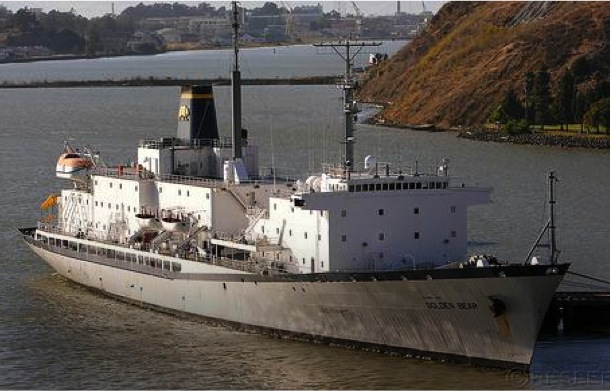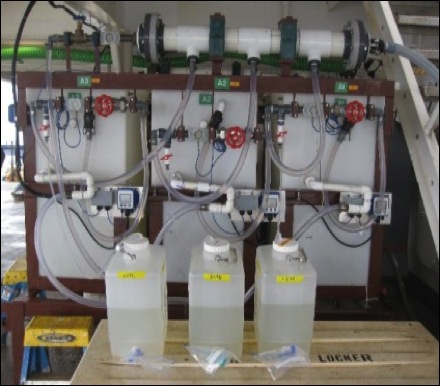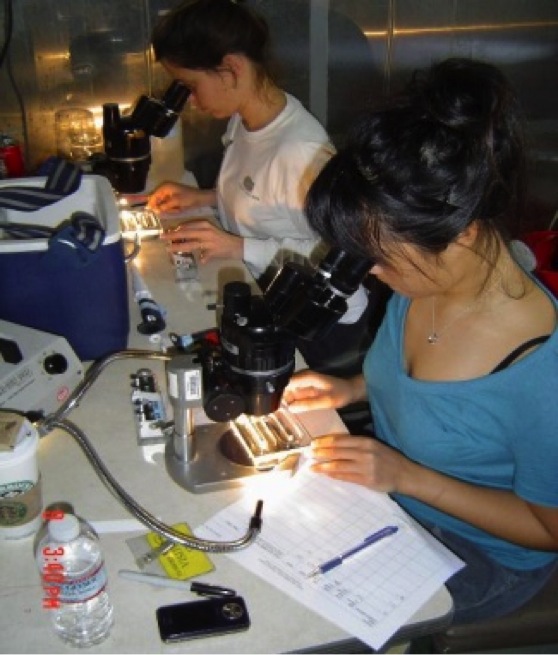By Liz Lam

Although I’m only a first-year graduate student here at Moss Landing, I’ve had the pleasure of working on the ballast water testing team with the Biological Oceanography lab for over a year now. Aquatic invasive species have become an increasingly large problem across the globe and one of the ways organisms make their way to non-native waters is through the ballast tanks of ships. The IMO (International Maritime Organization) is now requiring all ships to reduce the number of live zooplankters in their ballast tanks to only 10 in every 1000 liters. Since most zooplankton are microscopic, you can imagine that this is an incredibly challenging thing to accomplish!

But another huge challenge that our team directly faces is determining whether certain treatment methods have worked. How do we do this? With some good old fashioned counting! First, samples are filtered through a net that catches only organisms that are greater than 50 um in size (which is the size class we count by eye). Then, 5 mL of that sample are pipetted into a serpentine tray, which allows us to count what is in the sample row by row. We can then look under a microscope and manually count every single living zooplankton found in that 5 mL sample. This is sometimes known as the "poke and prod" method, since we may not even be sure if a zooplankter is alive or dead until after we've poked them with a small poker stick. Afterwards, we can use our 5 mL sample counts to extrapolate how many total organisms were found in 1000 liters of the treated water and determine whether the treatment method passed.

In order to make sure our zooplankton counts are as reliable as possible, we have to count samples multiple times. Although the work is time consuming and sometimes back-straining, it’s fun and fascinating to discover all of the tiny, microscopic organisms found in just a few drops of water. Everytime I count a new sample, I wonder what kind of alien-like creatures I’ll find swimming around!

